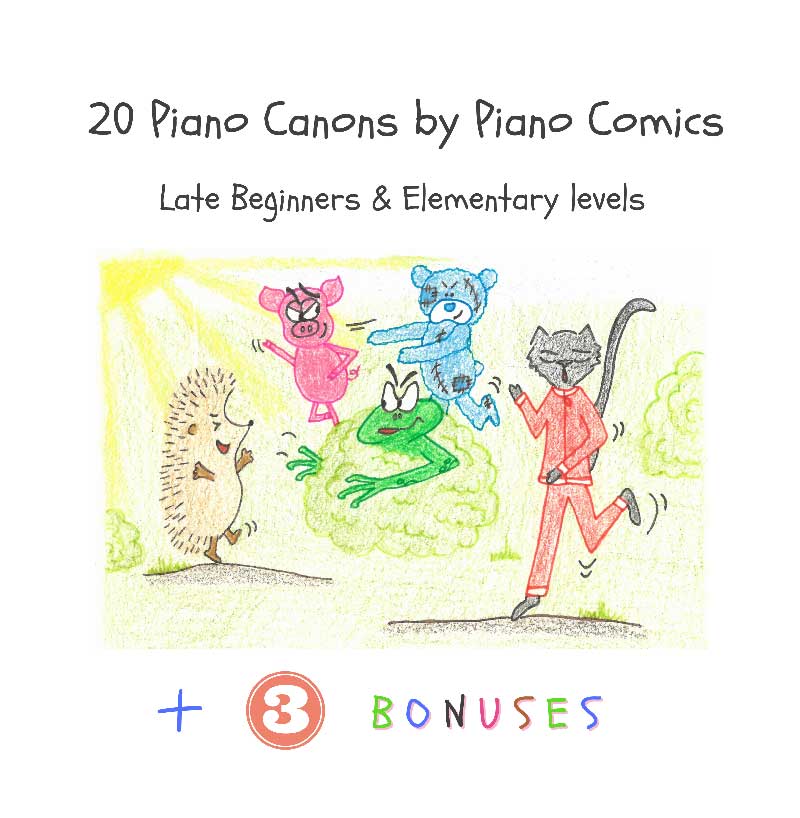Description
All 20 piano canons are composed in 10 different scales / tonalities. These scales have the same fingering:
c-major, g-magor, d-major, a-major, e-major, a-minor, e-minor, d-minor, g-minor and c-minor.
Each scale has 2 canons.
1st Canon:
The 1st canon of each scale is in 1 hand position. There are nofinger turns. They are very short and usually last 5-8 bars. These easy/ simple canons are for Late Beginners. The lyrics rhyme with the melody and describe the illustrations of the 5 heroes of Piano Comics.
2nd Canon:
The 2nd canon of each scale is longer ( 9-13 bars ), has finger turns and jumps, alterations and is more complex in melody and rhythm. These canons are for Elementory levels. Again, lyrics rhyme with the melody and tell the stories and adventures of the Piano Comics’ heroes.
Watch, listen to and download the 1st and 2nd page of ‘20 Piano Canons’ for free here.
3 Bonuses: When you purchase the Piano Comic ‘20 Piano Canons’ you get 3 bonuses that help you use it with more students.
Bonus n.1: Scores of all 20 canons with rounds /repetitions.
Each page/score (PDF) has 2 canons in the same scale for 2 levels.
Bonus n.2: 10 Videos of all 20 canons
2 canons in the same scale are performed in each video by students, parents and myself, the teacher, with the illustrations displayed alongside the lyrics.
Bonus n.3: Two sets of new lyrics for canons n.1
These new lyrics are for students to play among themselves ‘chasing’ each other using the melody of the assigned scale.
How and Why canons help:
Canons:
- are fun
- train and stabilise the sense of rhythm
- have a simple form and are interactive ( can be ‘played’ between two or more students/sibling )
- advance ear training and listening skills
- strengthen finger coordination
- improve the reading of musical notation on both clefs
On how to use Piano Comics, how the benefits derive from teaching it and how it can help in your piano teaching go to this link here.








Reviews
There are no reviews yet.